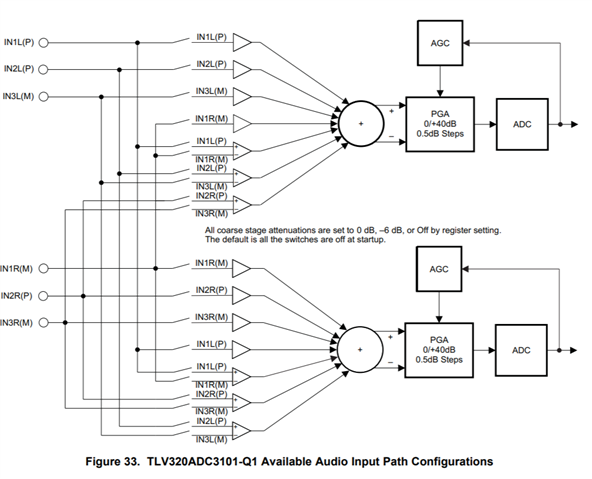I am confused by "Fig. 11 Typical Connections" from the TLV320ADC301-Q1 datasheet. Why are IN2R(P) and IN3R(M) connected to the same microphone? Same question obviously for the IN2L(P) and IN3L(M). I see that both IN2L and IN2R are both labeled (P)... so maybe this is just a naming convention thing that's throwing me as I am expecting IN2(M) and IN2(P) to be connected across the same microphone.
Does this configuration get you stereo audio on IN2 as the L(P) and R(P) are connected to signal side from the microphones?
If I don't need stereo audio and just want to read in audio from 2 microphones, could I connect the microphone "across" IN2L(P) and IN2R(P)?
As the INXX(M) terminal is effectively connected to ground in both cases, this is a configuration using single-ended microphones, right? However, the datasheet says that this part can handle 6 single-ended microphones... so it feels like each INXX channel could be used as a single-ended input and a single-ended configuration must look different.
As is probably apparent from my questions - I am pretty new to bringing in Microphone audio - so I'd appreciate one more assist: Your typical wired headset microphone (CTIA style), I am assuming that it's single-ended; however, I realize I could be wrong here. Can someone confirm?
Thank you,
Heffalump


